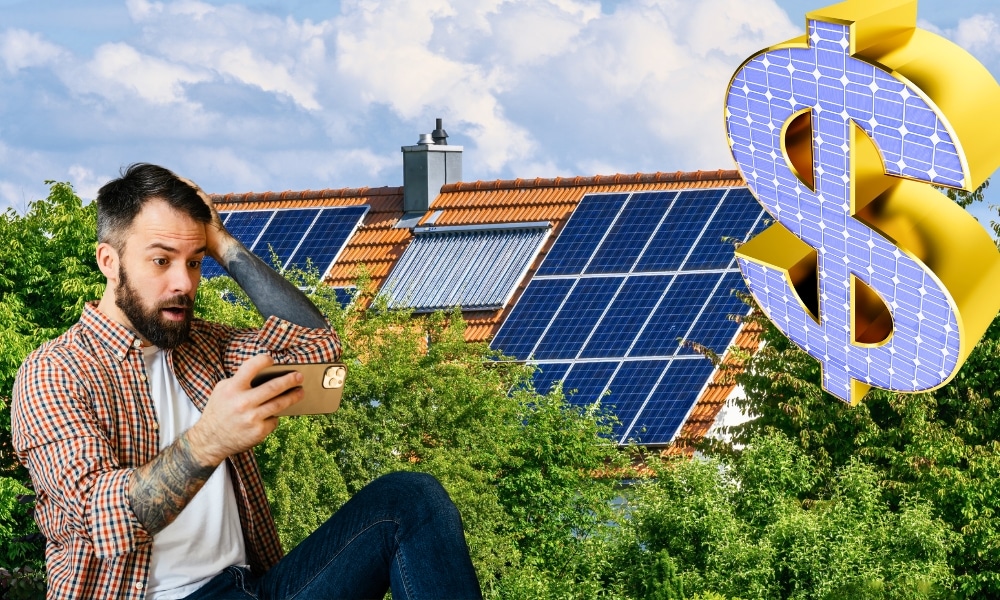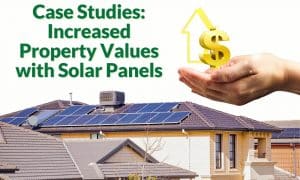Harnessing the sun’s power is a dream for many Australians, not just for the environmental benefits but also for the potential cost savings on electricity bills. However, navigating the initial investment of solar panel installation can be confusing. This guide dives into the nitty-gritty of solar pricing, providing a breakdown of the costs and the factors influencing them.
Understanding the breakdown: Where does your money go?
Now, let’s delve deeper into the cost breakdown of a solar panel installation:
- Solar panels: These are the workhorses of your system, capturing the sun’s energy. The cost varies depending on brand, efficiency, and wattage. Higher-efficiency panels may come at a premium but can generate more electricity with fewer panels.
- Inverter: The inverter converts DC electricity from the panels into usable AC electricity. Prices depend on brand, size (matching your system’s output), and warranty.
- Monitoring system (optional): This lets you track your solar energy production and system health. Costs vary depending on features and complexity.
- Balance of system (BOS): This encompasses all the other components needed for a complete installation, including racking (mounting system for the panels), wiring, safety switches, and connection to your grid.
- Battery energy storage: While only essential for some systems, adding solar battery storage allows you to store excess solar energy generated during the day and use it at night. This can significantly increase your self-reliance on solar power and reduce electricity bills. However, battery storage adds a significant cost to the overall system.
Ready to upgrade your solar systems and take your energy savings to the next level? Embrace the energy efficiency revolution by upgrading your solar systems and adding a battery or solar inverters with Energy Matters.
With our 3 free solar quotes, you can compare plans from pre-qualified and vetted installers in your area and find the perfect solution for your home and business. Harness the sun’s power and save money on electricity bills while reducing environmental impact. Let Energy Matters guide you towards a brighter, more sustainable future.
Additional considerations
- Permits and approvals: Obtaining necessary permits and approvals from local authorities can incur a nominal fee.
- Installation labour: The expertise of qualified solar installers plays a crucial role. Labour costs can vary depending on the installation’s complexity and the installer’s experience.
Understanding solar rebates and incentives
The good news? The Australian government offers financial incentives to encourage solar power adoption. The most prominent is the Small-scale Renewable Energy Scheme (SRES), which provides Small-scale Technology Certificates (STCs). These certificates translate into a rebate that reduces the upfront cost of your solar system. The exact value of STCs fluctuates based on market forces, but they can significantly impact the final price tag.
Here’s a helpful tip: Don’t solely focus on the headline price. While a lower upfront cost might seem attractive, consider the system’s long-term value. Opting for high-quality components with a proven track record can ensure optimal performance and minimise the need for future repairs or replacements.
The specific incentives you qualify for will depend on your location, system size, and property type. To find the most up-to-date information and applicable rebates, check our pages.

Solar panel system size: A balancing act
The size of your solar system is a crucial factor influencing the cost. A system sized to meet your entire electricity demand will naturally cost more than one that offsets a portion of your usage. Here’s a general guideline:
- Smaller systems (3kW—5kW): Ideal for low-energy-consumption households, these systems can effectively reduce daytime electricity usage.
- Medium systems (6kW – 8kW): A popular choice for many Australian homes, these systems can cover a significant portion of a household’s electricity needs.
- Larger systems (10kW and above): Suitable for high-energy consumption households or those with electric vehicle charging requirements, these systems can generate enough power to offset most, if not all, electricity needs.
Read more about:
- Finding the Perfect Fit: Solar System Sizing for a Single-Person Home
- Finding the Solar Sweet Spot: Choosing the Right Solar System Sizing for a Working Couple with an EV
- Finding the Right Fit: Solar System Sizing for an Aussie Family of 3 with an EV
- Powering Up Your Aussie Family of 5: A Guide to Solar System Sizing
- Choosing the Right Solar System Sizing for Retired Coupled Australians with EVs
Consulting with a reputable solar installer is vital to determine the optimal system size for your requirements. They will consider your historical electricity usage, roof space availability, and budget to recommend a system that delivers the best return on investment.
Are you looking to save money on your electricity bills and reduce your carbon footprint? Solar energy is the perfect solution! Energy Matters can help you get up to 3 FREE solar quotes from pre-qualified and vetted solar firms in your area.
Energy Matters has been a leader in the renewable energy industry since 2005 and has helped over 40,000 Australian households in their journey to energy independence. With Energy Matters, you can be sure you’re getting the best possible deal on solar energy. We only work with reputable solar firms with a proven track record of delivering high-quality solar systems.
A snapshot of solar costs in Australia
While exact costs can vary depending on factors mentioned earlier, here’s a ballpark figure for a typical solar panel installation in Australia (after factoring in STCs):
- Small system: This caters to households with moderate electricity consumption
- 3kW: $4,000 – $6,000
- 5kW: might cost between $5,500 and $7,000 after government rebates (more on these later)
- Medium system (around 6.6kW): This is a popular choice for many Australian houses and, after rebates, costs between $4,000 and $6,000.
- Large system (around 10kW): Ideal for high-consumption households, these systems can cost between $7,500 and $10,500 after rebates.
Remember, these are just estimates. Obtaining quotes from multiple qualified solar installers is crucial for a more accurate picture.
Financing your solar investment
There are several ways to finance your solar panel installation:
- Out-of-pocket payment: This is the most straightforward option but requires a larger upfront investment.
- Solar loans: Several lenders offer financing specifically for solar installations.
- Green loans: These government-backed loans offer competitive interest rates for energy-efficient upgrades like solar panels.
The takeaway: A sustainable investment
Solar panel installation represents an investment in your energy independence and environmental responsibility. By understanding the cost breakdown and leveraging government incentives, you can make an informed decision that benefits your wallet and the planet. Remember, while the initial cost might seem significant, the long-term savings on electricity bills and the environmental impact make solar a worthwhile investment for many Australians.
Ready to go solar? Get an instant assessment
To find out how much a solar system with storage or even an EV charger will cost, try our easy-to-use solar power and battery storage calculator! It will generate performance data and possible cost savings.
We can forward your information to 3 trusted local installers in your area to obtain free, no-obligation solar quotes.
Find out how much you can expect to pay for solar
Ready to find out more? Get FREE quotes for solar, batteries + more
*Prices quoted are to be used as a guide only and do not factor in state and other rebates and incentives. Includes STC discount.
Our Energy Matters CEO, Roshan Ramnarain, will feature stunning homes installed with the latest solar technology every Saturday at 5:00 p.m. on Open Homes Australia on the 9Life channel. Be sure to watch this show; you won’t want to miss it!















































